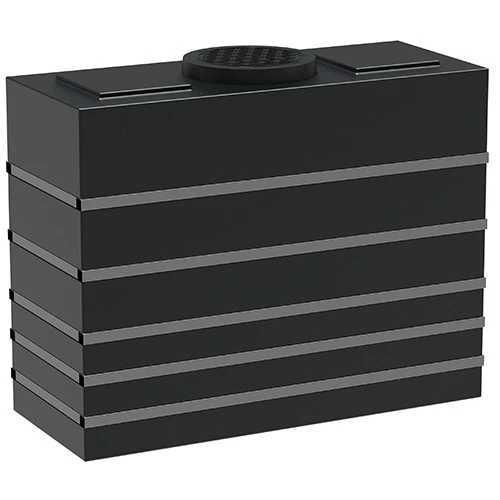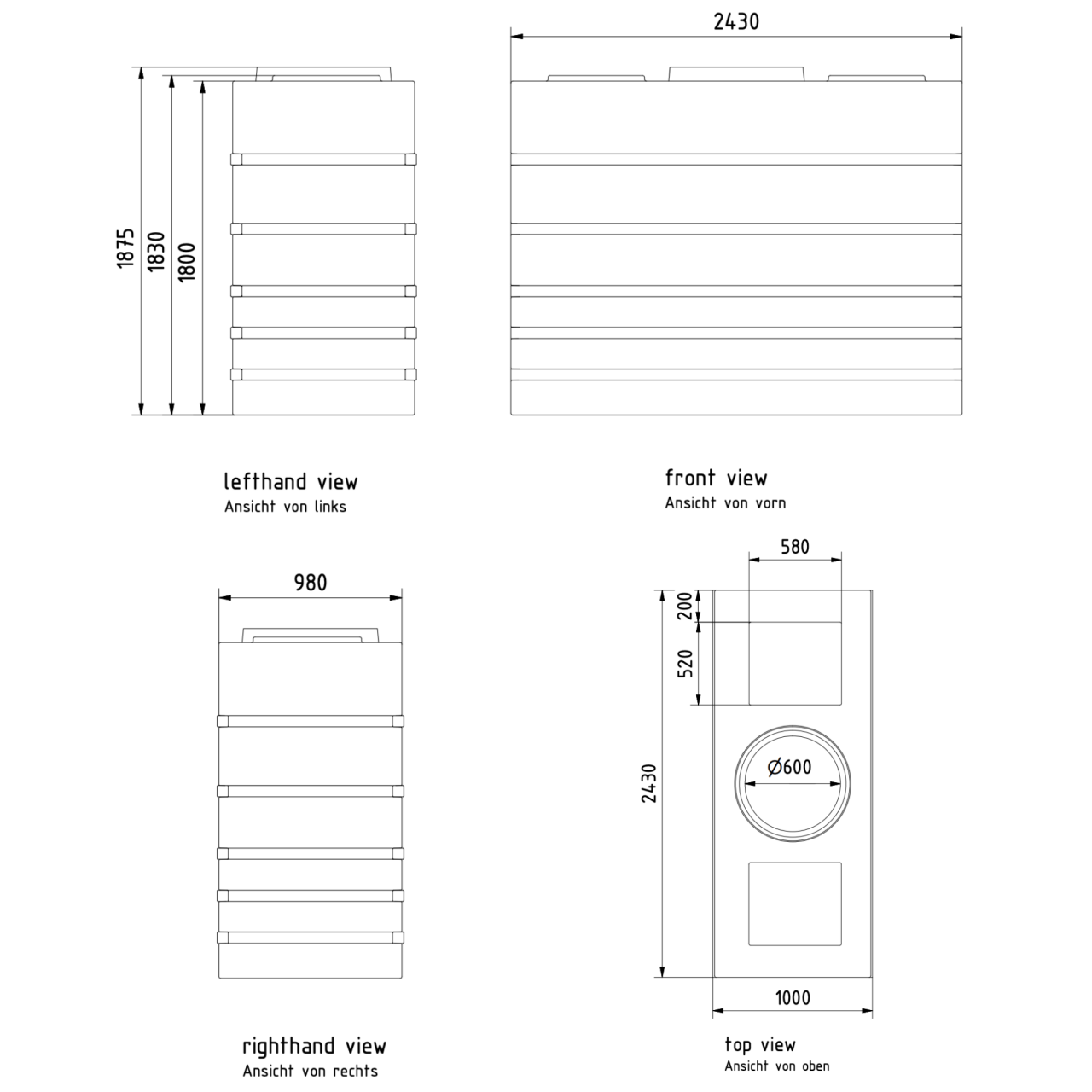
Cellar tanks
for rainwater as water storage
Cellar tanks are a space-saving way of storing rainwater safely and frost-protected in the house. They are particularly suitable for buildings without a garden or with limited outdoor space and offer an efficient solution for rainwater utilisation in everyday life.
Find out more now
Advantages of basement tanks
for rainwater utilisation
A basement tank for rainwater optimises the use of existing space in the building and protects the stored water from frost and sunlight. Indoor installation enables short pipe runs, easy maintenance and constant temperatures - a clear advantage over outdoor solutions.
This allows the collected rainwater to be stored efficiently and used in a variety of ways without requiring additional space in the garden. Modern water tanks for basements are made of robust plastic and can be customised to suit individual requirements - from a small cistern in the basement from a small cistern in the basement to a complete house system.

Space-saving installation
and modular expandability
Thanks to its compact design, a water tank in the basement can also be installed in rooms with low ceilings or narrow entrances. Many systems consist of individual modules that can be assembled on site - ideal for narrow stairwells or doorways. The modules are available in different sizes, often as a 1000 litre tank or in combinable segments, so that the storage volume can be flexibly expanded.
Anyone who wants to install a rainwater tank in the basement benefits from the easy accessibility for maintenance and technology: The pump, filter and control system can be integrated directly and ensure a consistent supply. Further information on suitable pumping technology can be found at Pump technology for rainwater .
Possible applications
of rainwater from cellar tanks
Rainwater from the cellar tank can be used in a variety of ways: for watering the garden, flushing the toilet, the washing machine or for cleaning. The protected interior keeps the water clean and cool so that rainwater can be reliably collected in the tank and stored for longer periods of time. A modern tank for rainwater saves drinking water and reduces ongoing operating costs.
A cistern as a basement tank also offers advantages for larger households or commercial applications: In conjunction with filter and pump technology, automatic operation is possible, which ensures a constant supply regardless of weather phases. This makes the basement tank the central component of efficient rainwater utilisation in the building.
Selection criteria and technology
for the cellar tank
The cellar tanks are available in various sizes and widths so that they can be easily installed even in tight spaces. The 500 litre and 1000 litre tanks in particular can still be transported through many door openings and are therefore a good choice, even if access to the installation room is limited. If you need a higher storage volume, you can easily combine several tanks to create a flexible system according to the available space and requirements.

The following overview of the available tank sizes and typical widths provides orientation:
- 140 litre tank: approx. 40 cm wide
- 350 litre tank: approx. 55 cm wide
- 500 litre tank: approx. 65 cm wide
- 1,000 litre tank: approx. 72 cm wide
- 4,000 litre tank: approx. 100 cm wide
All models are made of robust plastic and are designed for indoor installation. The combination of several units creates a flexible cistern in the cellar, which can be optimally adapted to the room situation and water requirements. This makes the system a sustainable solution for rainwater utilisation with water tanks in the basement.
Fitting and installation
in the cellar
When installing a rainwater tank in the basement, careful planning of the installation location and installation is essential. The installation area should be easily accessible, frost-free and walkable, and the floor surface should be level and load-bearing. Make sure that the width is sufficient for transport through doors and stairwells - especially for units with larger volumes.
Checklist - Installation
Installation of cellar tanks
- Installation room easily accessible, frost-free and level
- Check door and stair widths for transport
- Prepare a solid base (concrete base or compacted gravel bed)
- Keep the inlet, overflow and technology module freely accessible
- Lay pipes with a gradient (approx. 1 cm / m)
- Mark non-drinking water pipes
- Ensure maintenance and cleaning access
Installation begins with a suitable concrete base or a compacted gravel bed on which the tank is precisely aligned. Connections for the inlet, overflow and technology module must remain accessible and the pipes must be correctly dimensioned and routed in accordance with the pump technology. A gradient of around 1 cm per 1 m of pipe length is recommended for the inlet; free accessibility for maintenance, cleaning and the sludge chamber is also important.
It is also important for basement installations: the system must not be confused with the drinking water network, Every non-drinking water pipe must be labelled (labelling set). The internal structure in the cellar protects the tank from frost and external influences and contributes to long-term operational safety.
Rainwater
Use in the garden and household
With a cellar tank, rainwater utilisation can be easily integrated into irrigation and household supplies. The low-lime water is plant-friendly and is ideal for watering the garden with rainwater, for drip systems, sprinklers or rain barrels.
Rainwater can also be used in many ways in the household - for example, for flushing toilets and washing machines. This saves valuable drinking water and reduces the amount of wastewater in everyday life.
Whether in the garden or at home, the stored water from the cellar tank ensures an efficient, sustainable and low-maintenance supply all year round.

Sustainability
and saving drinking water
The use of rainwater makes an important contribution to the sustainable use of resources. Using rainwater in everyday life reduces the need for expensively treated drinking water and relieves the burden on the municipal infrastructure; at the same time, the energy required for pumping, treatment and transport is reduced.
Rainwater can be stored in basement tanks and accessed as required - regardless of the weather or season. This form of rainwater utilisation lowers running costs and reduces the household's ecological footprint.
Discover cellar tanks
Suitable for space and requirements
Cellar tanks offer a practical way of efficiently storing rainwater indoors and using it for garden, household or technical purposes as required. Thanks to their compact dimensions and modular design, they can be customised to almost any room situation.
Depending on the space available and the desired storage volume, there are various models to choose from - from the compact 140-litre tank to the spacious 4,000-litre tank. In the following overview, you will find the right basement tanks for your needs - including technical details and accessories for reliable rainwater utilisation in the home.




















